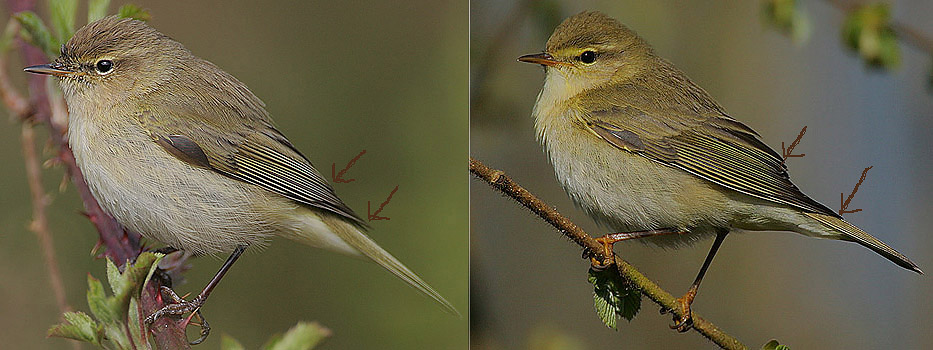Which Warbler?
Spring sees the return of our breeding Warblers from Africa, with everything from common Chiffchaffs and Willow Warblers to rarer Lesser Whitethroats and Barred Warblers appearing on our shores. Here at Montrose Basin Visitor Centre we also get our fair share of Warblers paying a visit, with one day this month (2nd of May) having 5 different Warbler sightings; Chiffchaff, Willow Warbler, Sedge Warbler, Whitethroat and Blackcap.
But how do you tell this myriad of similarly looking birds apart from one another? Although many of the species are physically similar, the best way to tell them apart is usually by their song, with each warbler species having a distinct and usually attractive song. It would take pages upon pages to explain how to identify each and every warbler species, so I’ll focus on two of our most common species, which also happen to be two of the most similar in appearance; the Willow Warbler and the Chiffchaff.
Both species are from the Phylloscopus genera, meaning they are closely related, being reflected in their appearance. They are both small birds with slender bill and legs, short narrow tails and grey-green upper feathers. Identification is also made harder by the fact that they are always on the move, darting around the foliage, meaning even the most experienced of birdwatchers may have several willow-chaffs sightings in their notebooks. But don’t fear, there are ways to tell them apart.
The easiest way to tell the two apart is by their leg colour. Chiffchaffs have dark brown legs whilst Willow Warblers have very light brown, almost pinkish legs. There can, however, be exceptions to the rule, with some Willow Warblers having darker legs than usual, although this is uncommon. In general Willow Warblers are slightly lighter than Chiffchaffs, with their under parts being more yellow than those of the duller Chiffchaff, although this can be very hard to distinguish when they aren’t side by side. An alternative, but much harder way to separate the two species is by comparing something called their primary projection. This is basically how far the primary feathers extend past the tertial feathers, with those of the Willow Warbler extending much further than those of the Chiffchaff (as shown in the image below). This method does require a good grasp of bird topography skills however, along with the bird sitting still for long enough to identify these features.
If you get to know the songs of the two birds, however, then it’s usually the easiest way to tell them apart, with the two songs being noticeably different. The Chiffchaff’s song is one of the easiest to identify out of all the warbler’s with it simply repeating the sound –chiff-chaff, chiff-chaff’. The Willow Warbler in contrast has a much more melodic song, starting softly, followed by a liquid series of descending notes and usually ending in a flourish.
The picture below has been left without description so that you can now try and identify between the two species yourself!

Craig Shepherd,
Visitor Centre Assistant Manager.
Help protect Scotland’s wildlife
Our work to save Scotland’s wildlife is made possible thanks to the generosity of our members and supporters.
Join today from just £3 a month to help protect the species you love.
Preface
Spring sees the return of our breeding Warblers from Africa, with everything from common Chiffchaffs and Willow Warblers to rarer Lesser Whitethroats and Barred Warblers appearing on our shores. Here …
